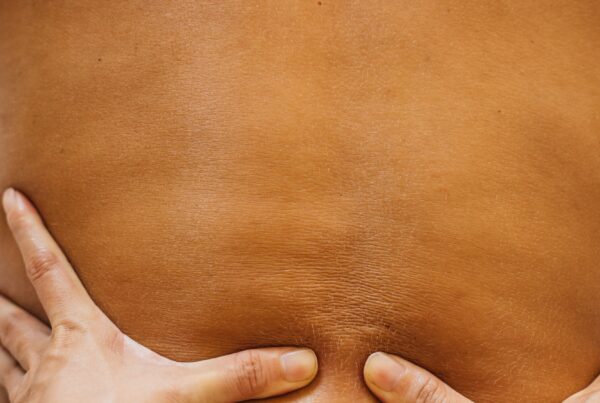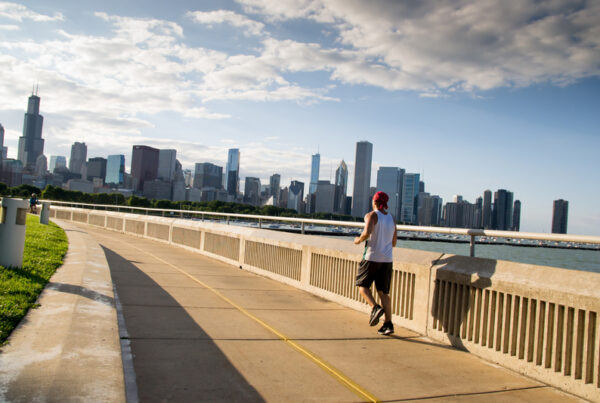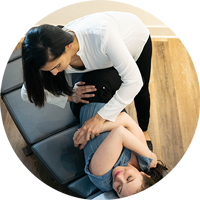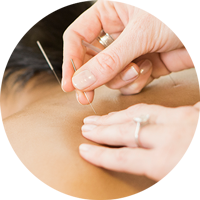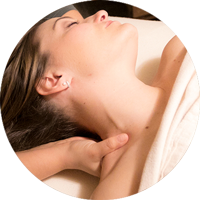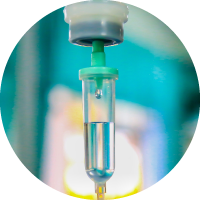After a tough few weeks of frigid cold temperatures causing athletes to take their workouts inside, warmer weather has arrived! Whether you’ve been maintaining a running routine indoors, or you have yet to hit the track this year, it’s important to listen to your body and take the proper preventive measures to prevent serious injury.
A common condition experienced by athletes is patellofemoral pain syndrome – more commonly known as runner’s knee. The University of Chicago Medicine defines runner’s knee as a dull pain around the front of the knee (patella), where it connects with the lower end of the thighbone (femur).
Most causes of runner’s knee can be avoided. But, some cases of runner’s knee are due to structural defects, which can be determined by a doctor.
Runner’s knee pain can be caused by:
· Overuse: Excessive plyometric drills overstretch tendons, & irritate the kneecap.
· Direct trauma to the knee
· Malalignment: Sometimes the kneecap is slightly out of position.
· Weak thigh muscles: When the quad muscles are not strong, it causes more pressure to be placed on the knee during activity.
· Poor foot support: Either week foot muscles or inadequate shoe support.
· Poor running form: Unnatural or awkward movements of muscles and bones in the feet, legs, and hips.
Symptoms may include:
· Pain in and around the knee during activity, after prolonged periods of sitting, or walking downhill.
· Clicking or grinding of the kneecap can be heard during motion.
· The kneecap is tender to the touch
It’s important to note that not all symptoms are the same in each individual, and that some symptoms of runner’s knee may actually resemble another condition or medical problem. It’s always best to consult with a physician before going forward with a diagnosis and treatment plan.
Treatment for runner’s knee can be as simple as getting enough rest between runs to needing a prescription for physical therapy to learn strengthening exercises.
Cold packs, elevation, ibuprofen, stretching, arch support in shoes are other treatments offered to treat various stages of runner’s knee.
Many of the treatment methods for runner’s knee are also great preventive measures.
· Using orthotics in your walking, running shoes. Also use them in your every day wear if you work in walking heavy industries – retail, food service, trainer.
· Avoid running on hard surfaces like concrete.
· Maintain a healthy weight and regular exercise schedule.
· Use a knee brace for extra support during activities if knee issues have been a problem before.
· Invest in and maintain proper footwear. Replace shoes once arch and frame support has been lost or misshapen.
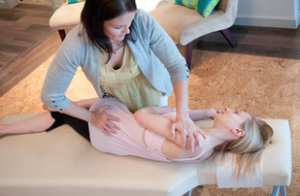 Aligned Modern Health offers multiple solutions to athletes experiencing runner’s knee — physical rehabilitation, fitness classes crafted by medical staff & fitness experts to compliment your rehabilitation program, and acupuncture to relieve stress and pain for runners.
Aligned Modern Health offers multiple solutions to athletes experiencing runner’s knee — physical rehabilitation, fitness classes crafted by medical staff & fitness experts to compliment your rehabilitation program, and acupuncture to relieve stress and pain for runners.
With so much support for your running goals this spring, there’s no excuse not to hit the road once the warmer temperatures are here to stay!
Sign up for our free newsletter or follow us to get healthy tips, special offers, and more!
Locations
© 2024 Aligned Modern Health
- Services
-
Heal faster and more effectively
We offer multiple treatment options and specialists under one roof to address everything from pain to dietary imbalances to emotional health - without the use of drugs or surgery.
-
- People
-
Top-rated healthcare providers, changing the face of healthcare
Whether you want to eliminate pain, increase your energy, or address unresolved symptoms of existing health concerns, our team is ready to work with you to create a roadmap for optimal wellness.
-
- Locations
-
Convenient locations throughout Chicago and Suburbs
As a leading wellness center in the Chicagoland area, Aligned Modern Health is committed to serving you wherever you are. Explore our locations to find the most convenient clinic for you.
-
- Resources
-
We believe that the greatest medicine of all is to teach our patients how to not need it.
We pride ourselves in leadership through patient and community education that goes beyond our clinic walls. Every visit is backed by added-value resources, comprehensive support, and community experiences to help you achieve all your wellness goals.
-
- Articles
- Shop
- Book Now


